Danube Cycle Plans - Ministries of nine European countries have endorsed the outputs of the Danube Cycle Plans project
11-10-2022
The European Danube Cycle Plans project, which aims to improve conditions for cycling in the Danube Region, presented the results of its efforts today. Experts from Austria, Czechia, Slovakia, Hungary, Romania, Serbia, Croatia, Slovenia and Bulgaria have gathered in Prague to present the results of the project, in which dozens of cooperating organisations and experts in transport, health and environment in nine European countries were engaged over the last 2,5 years.
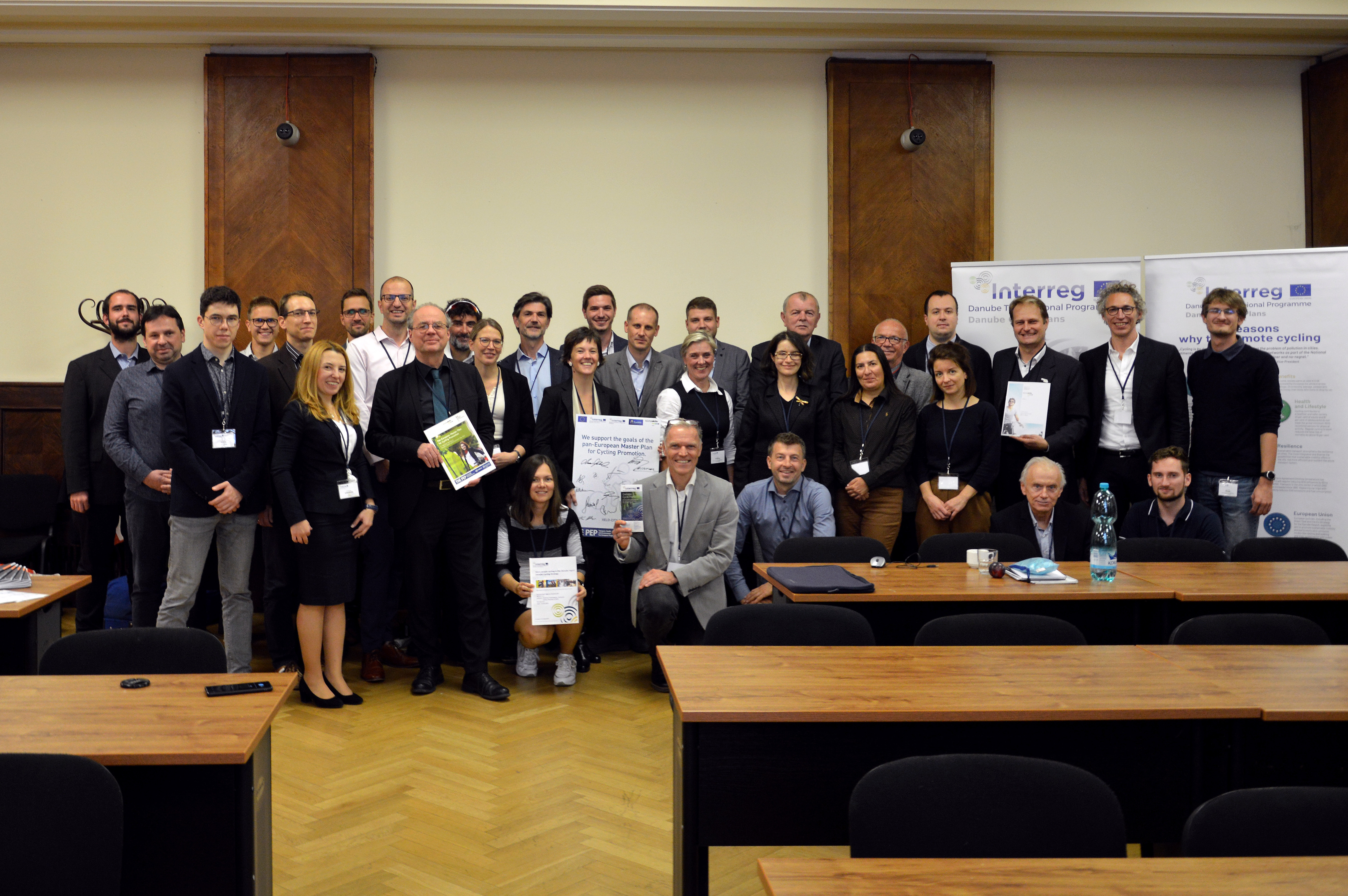
Photo: Martina Mončeková, Czech Partnership for Urban Mobility
"As many studies have shown, cycling brings a range of benefits for the economy and the job market, for transport, health, environment and for reducing our dependency on fossil energy. More people cycling equals fewer emissions, more physical activity and better transport system efficiency," said Martin KUPKA, Czech Minister of Transport during his welcome speech. Doubling volume of cycling in Europe would result in reducing greenhouse gas (GHG) emissions by 8 million tons of carbon dioxide equivalent (CO2e) with indirect economic benefits of 1.1 billion euro per year in the region. But the health benefits are even more significant. Doubling the current level of cycling would prevent 30,000 premature deaths with indirect economic benefits amounting to 78 billion euro per year.
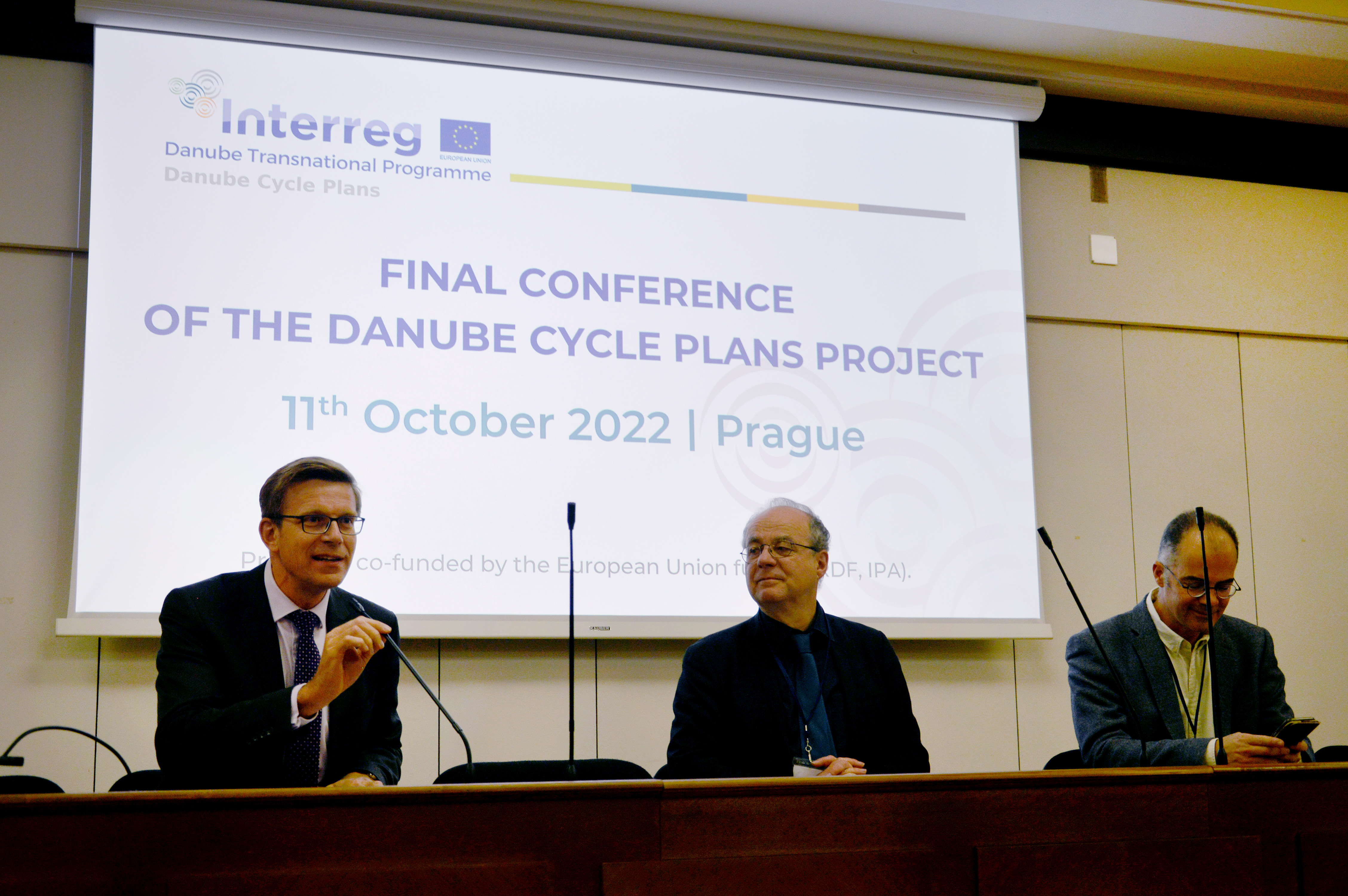
Martin KUPKA, Czech Minister of Transport. Photo: Martina Mončeková, Czech Partnership for Urban Mobility
"Increasing cycling in Europe would not only result in reducing greenhouse gas emissions as it is a major factor in saving energy for individuals and within national economies. It will also lead to significant health benefits, leading to huge indirect economic benefits in Europe ,” says Wilfried RAIMUND of the Environment Agency Austria, a Lead Partner of the Danube Cycle Plans project. “With the Danube Cycle Plans we paved the way to improve conditions for cyclists in the Danube region.”
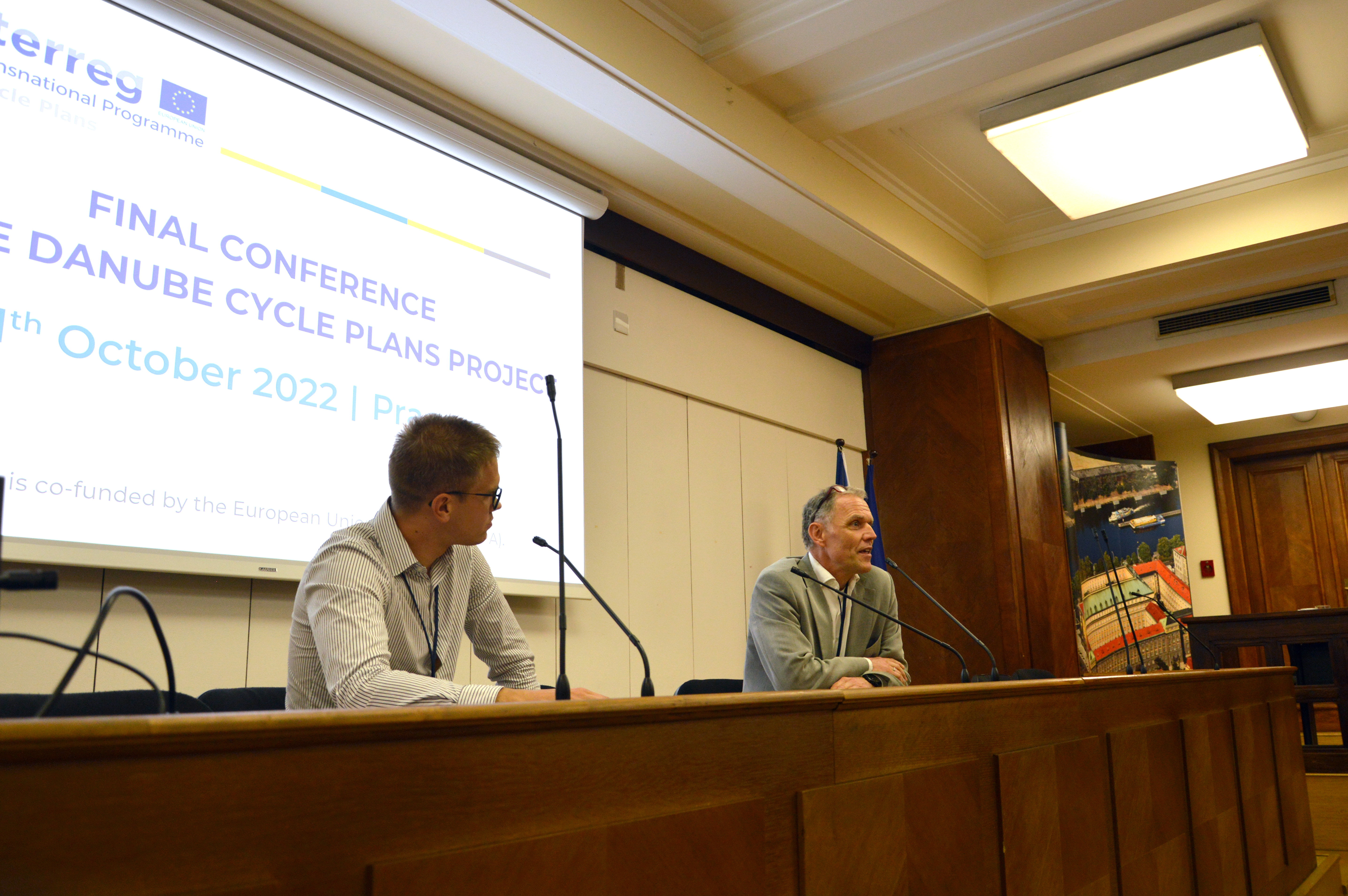
Wilfried RAIMUND, Environment Agency Austria, a Lead Partner of the Danube Cycle Plans project. Photo: Jitka Vrtalová, Czech Partnership for Urban Mobility
The cycling levels vary considerably in the countries of the Danube Region, from 1–2% in Romania or Bulgaria to 17% in Hungary. What these countries have in common is the ambition to significantly increase cycling in every country to contribute to the overall target of doubling cycling in the Danube region as a whole. With that the countries support the objectives defined in the Vienna Declaration, adopted by 41 countries of the pan-European region on May 18, 2021. This declaration recognizes the benefits of cycling and calls for the implementation of the Pan-European Master Plan for Cycling Promotion.
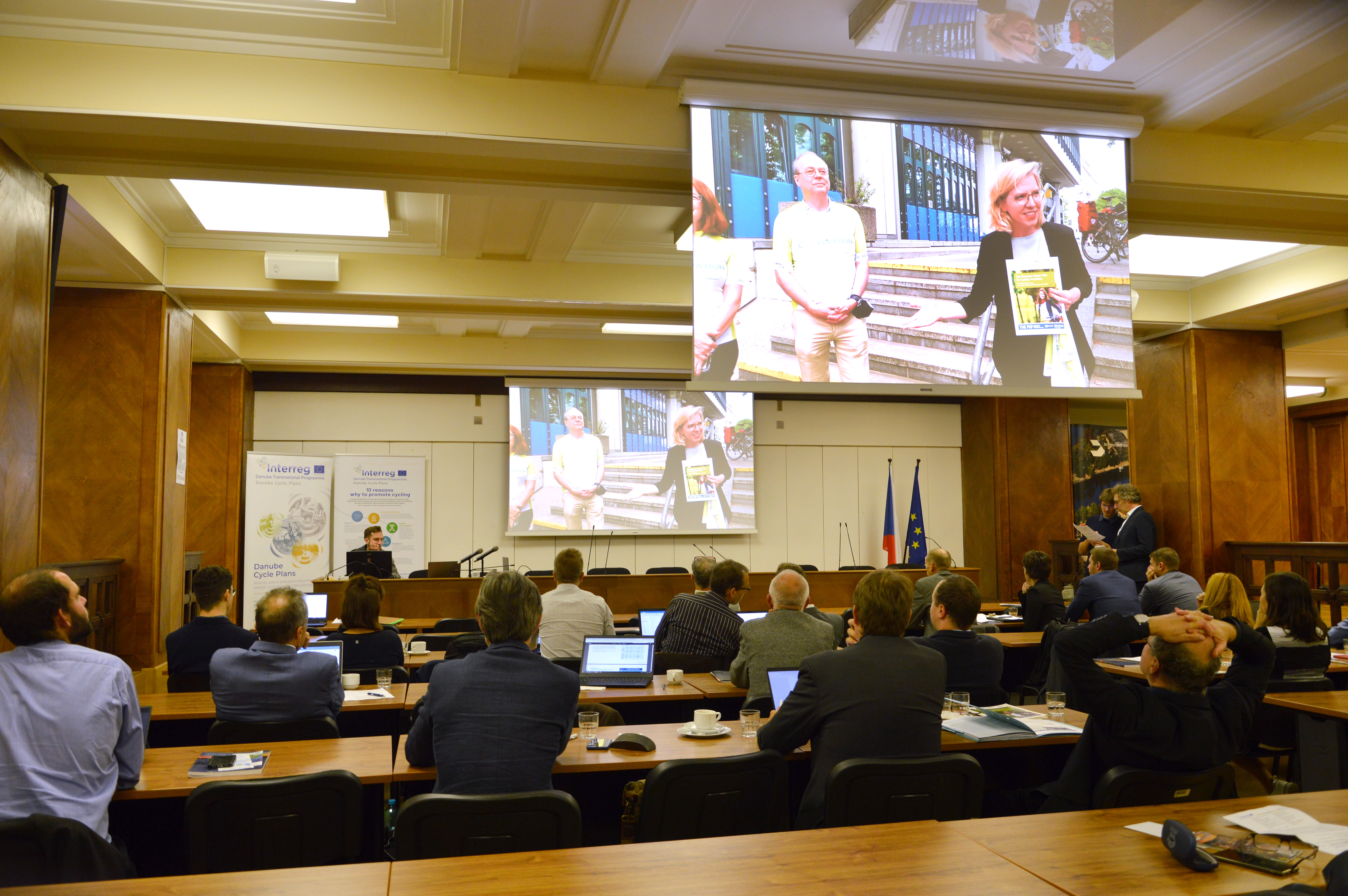
Leonore GEWESSLER, Austrian Federal Minister of the Climate Action, presenting the Pan-European Master Plan for Cycling Promotion in Vienna during the Danube Cycle Plans event. Photo: Jitka Vrtalová, Czech Partnership for Urban Mobility
Nine countries of the Danube Region - Austria, the Czech and Slovak Republics, Hungary, Romania, Serbia, Croatia, Slovenia and Bulgaria - were involved in activities that included not only the development or updating of national strategies, but also the preparation of framework conditions needed for infrastructure improvements, ranging from route development, investment plans and minimum infrastructure standards, awareness-raising activities and the involvement of relevant stakeholders. The greetings sent by the ministers of these countries confirmed their determination to continue on the path towards a better position of cycling in the societies of the Danube countries.
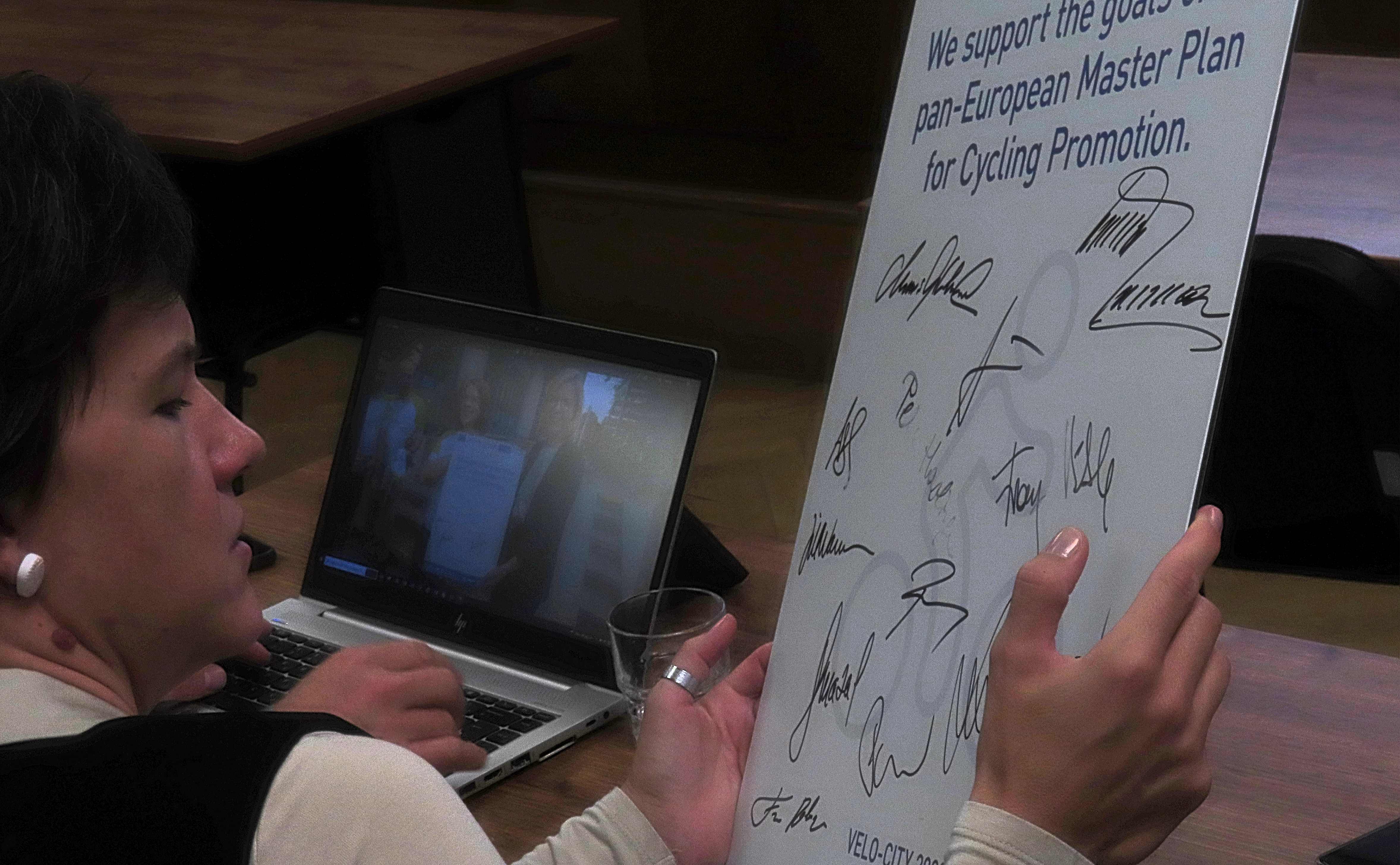
Photo: Ionut Maftei, Bike in Time
"The Danube Cycling Strategy as the main output of the project summarises the experience of the countries of the whole Danube Region. The strategy defines the conditions that need to be met to increase the volume of cycling. With the activities implemented in Danube Cycle Plans project the partners contribute greatly to the implementation of the first pan-European Master Plan for Cycling Promotion and THE PEP," says Robert THALER, Vice Chairman of THE PEP (Transport Health Environment Pan European Programme).
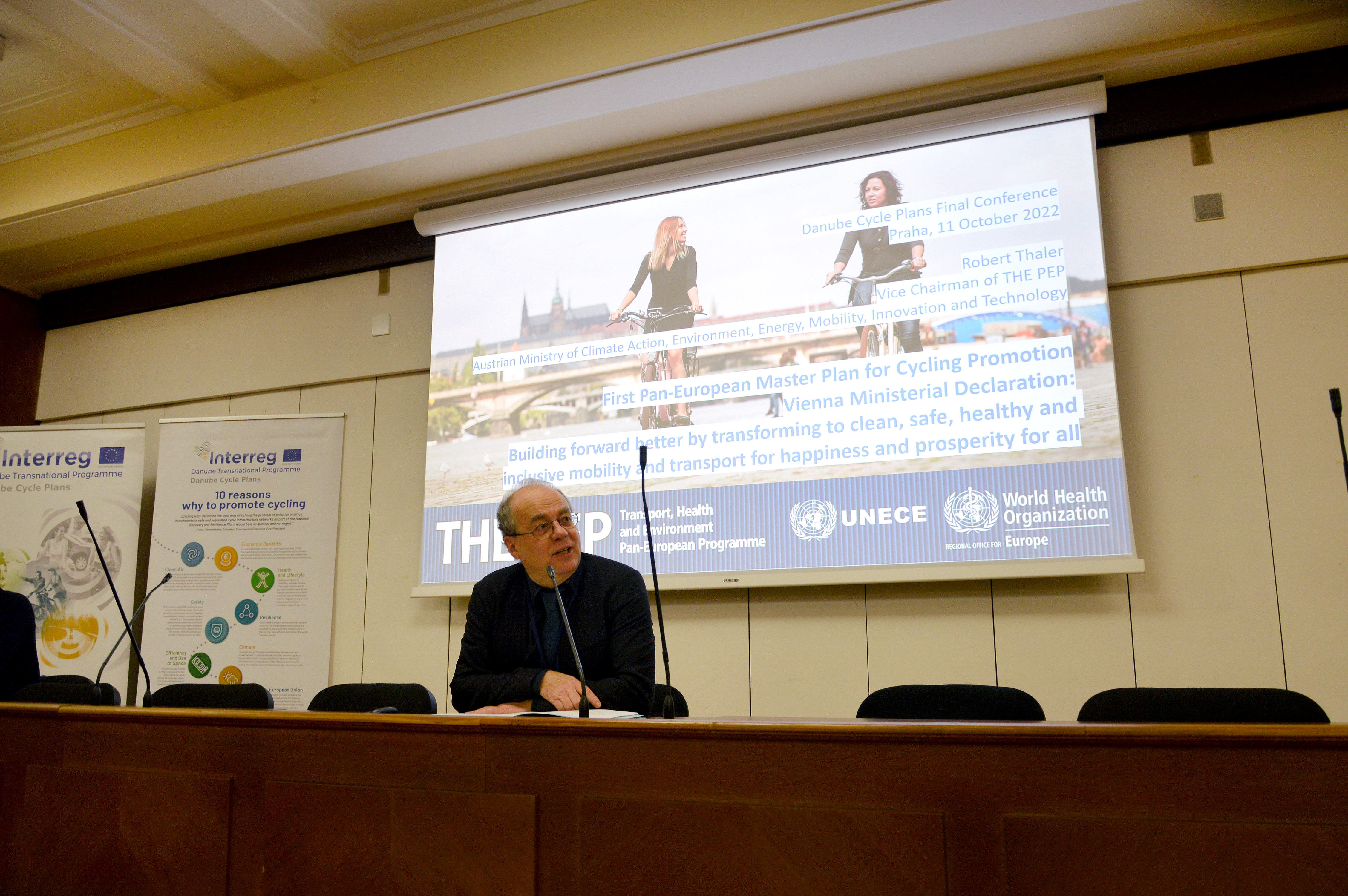
Robert THALER, Vice Chairman of THE PEP (Transport Health Environment Pan European Programme). Photo: Martina Mončeková, Czech Partnership for Urban Mobility
The project has produced 5 new and 4 updated National Cycling Plans. Over the last two years, dozens of stakeholders, involved in a total of nine National Cycling Working Groups, have been working on them and will continue their cooperation during the implementation phase.

Panel discussion involving the representatives of individual countries of the Danube region. Photo: Martina Mončeková, Czech Partnership for Urban Mobility
One of the key factors in supporting the development of cycling is appropriate infrastructure. After two and a half years of cooperation, nine countries in the Danube region produced an investment plan for an attractive and safe cycle route network for the Danube region.
This “DanuVelo” network consists of roughly 38.000 km of EuroVelo routes and the highest level of the national cycle route networks defined by the National Cycling Working Groups of the participating countries. An assessment of the current conditions showed that only about 20% of this network is in acceptable condition. To be finished in a minimum standard level, this network needs investments of 5,2 billion euro. The good news is that these are very profitable investments. Cycling produces global benefits of 150 billion euros per year. More than 90 billion euros of these are positive externalities for the environment, public health and the mobility system. Just to compare, the cost of travelling by car is 6 times higher per kilometre travelled compared to cycling. Shifting part of the travel to the bicycle also brings major energy savings within national economies.
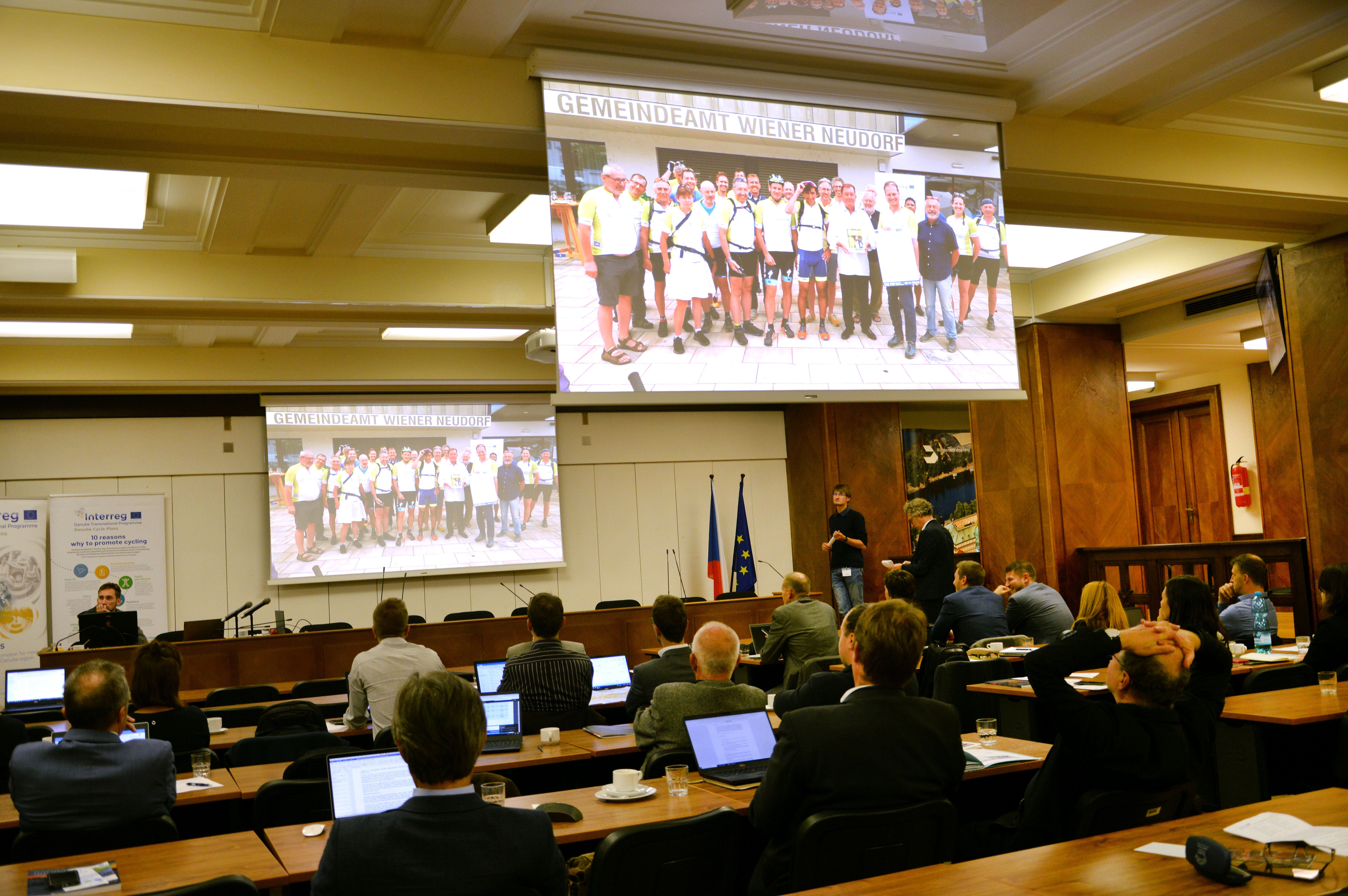
Danube Cycle Plans project included also the bike ride from Vienna to Velo-city conference in Ljubljana in June 2022. Photo: Jitka Vrtalová, Czech Partnership for Urban Mobility
41% of the population over 15 years is cycling regularly, which means at least several times per week. That sums up to 30 million people in the Danube Region. The project Danube Cycle Plans is not only aimed at improving conditions for those who already cycle, a further goal is to create an environment with equal conditions for all modes of transport.
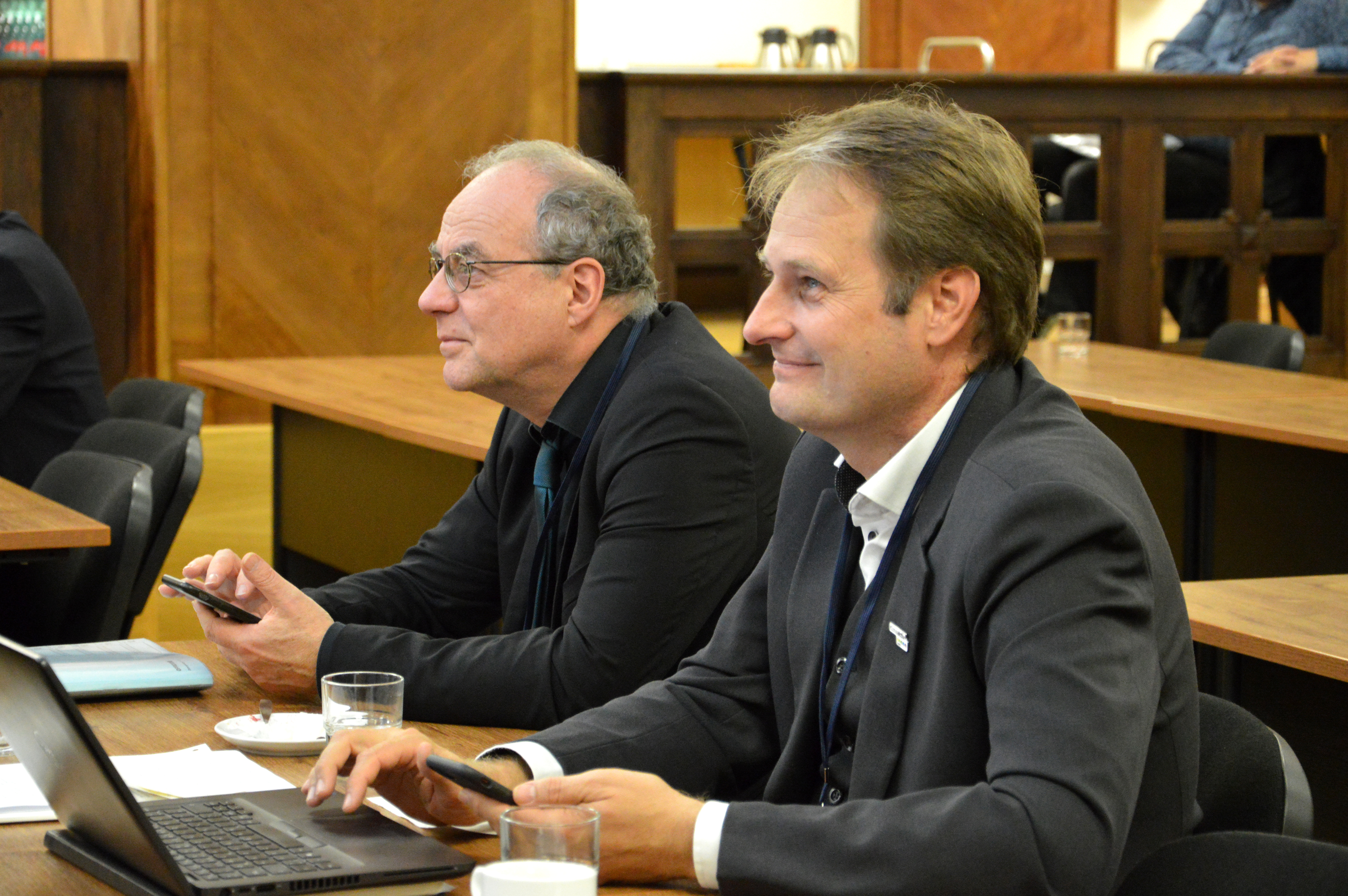
[from left] Robert THALER, Vice Chairman of THE PEP (Transport Health Environment Pan European Programme), Martin EDER, Austrian Federal Minister of the Climate Action. Photo: Jitka Vrtalová, Czech Partnership for Urban Mobility
The conference was organized by the Czech Partnership for Urban Mobility Association, together with Environment Agency Austria as the Lead Partner, with the support of other organisations involved in the Danube Cycle Plans project. These include the ministries of five countries (Ministry of Climate Action, Environment, Energy, Mobility, Innovation and Technology of Austria, Ministry of Transport and Construction of the Slovak Republic, Slovenian Ministry of Infrastructure, Ministry of the Sea, Transport and Infrastructure of Croatia, Ministry of Transport of the Czech Republic), together with national institutions KTI Institute for Transport Sciences from Hungary, National Institute for Research and Development in Tourism from Romania, Bulgarian Association for Alternative Tourism and Danube Competence Center from Serbia.
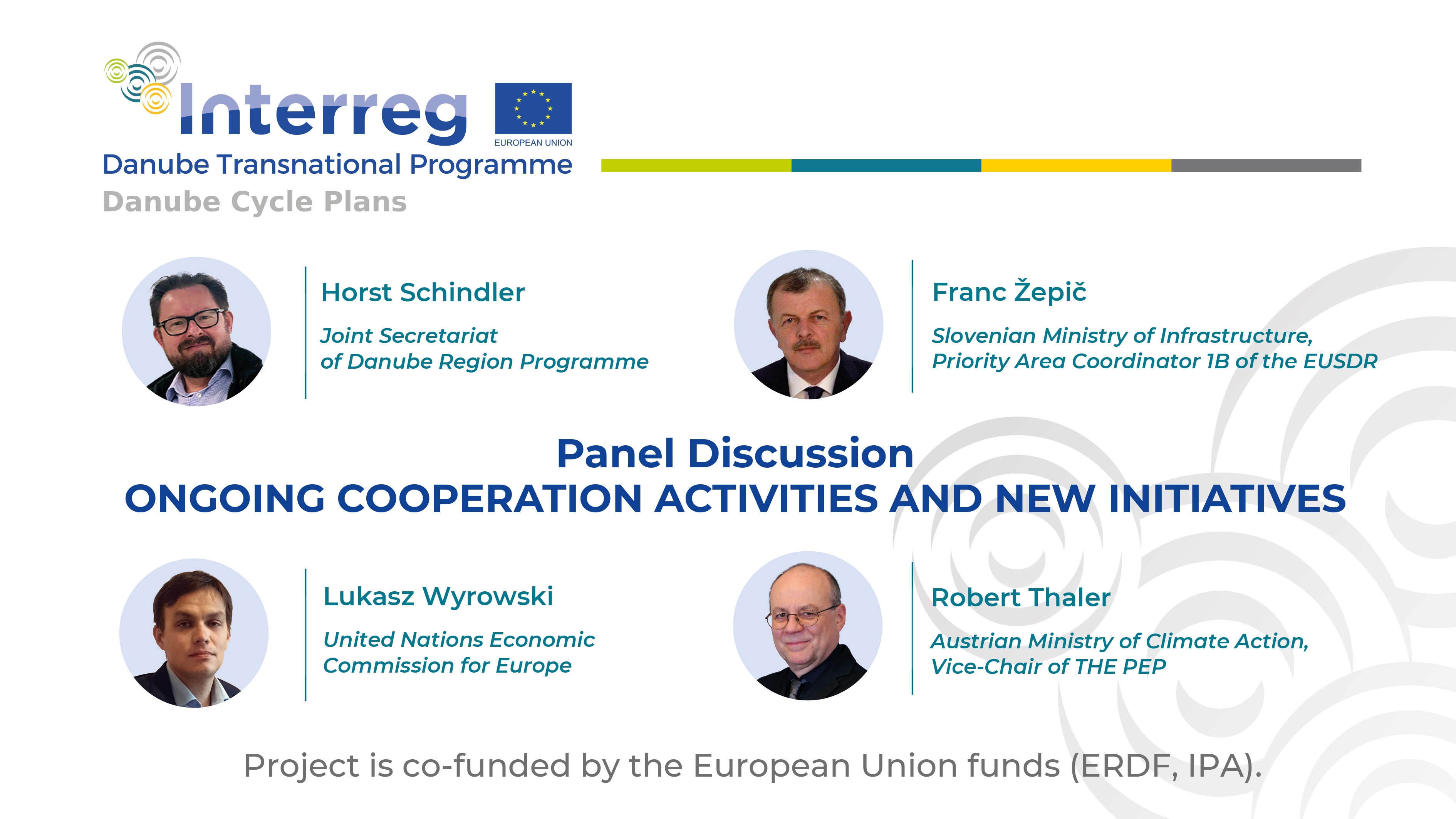
Panel discussion with representatives of international institutions. Photo: Martina Mončeková, Czech Partnership for Urban Mobility
Detailed information:
- Presentations from the event
- Programme of the event (download in PDF)
- Photos (Credits: Martina MONCEKOVA, Partnership for Urban Mobility)
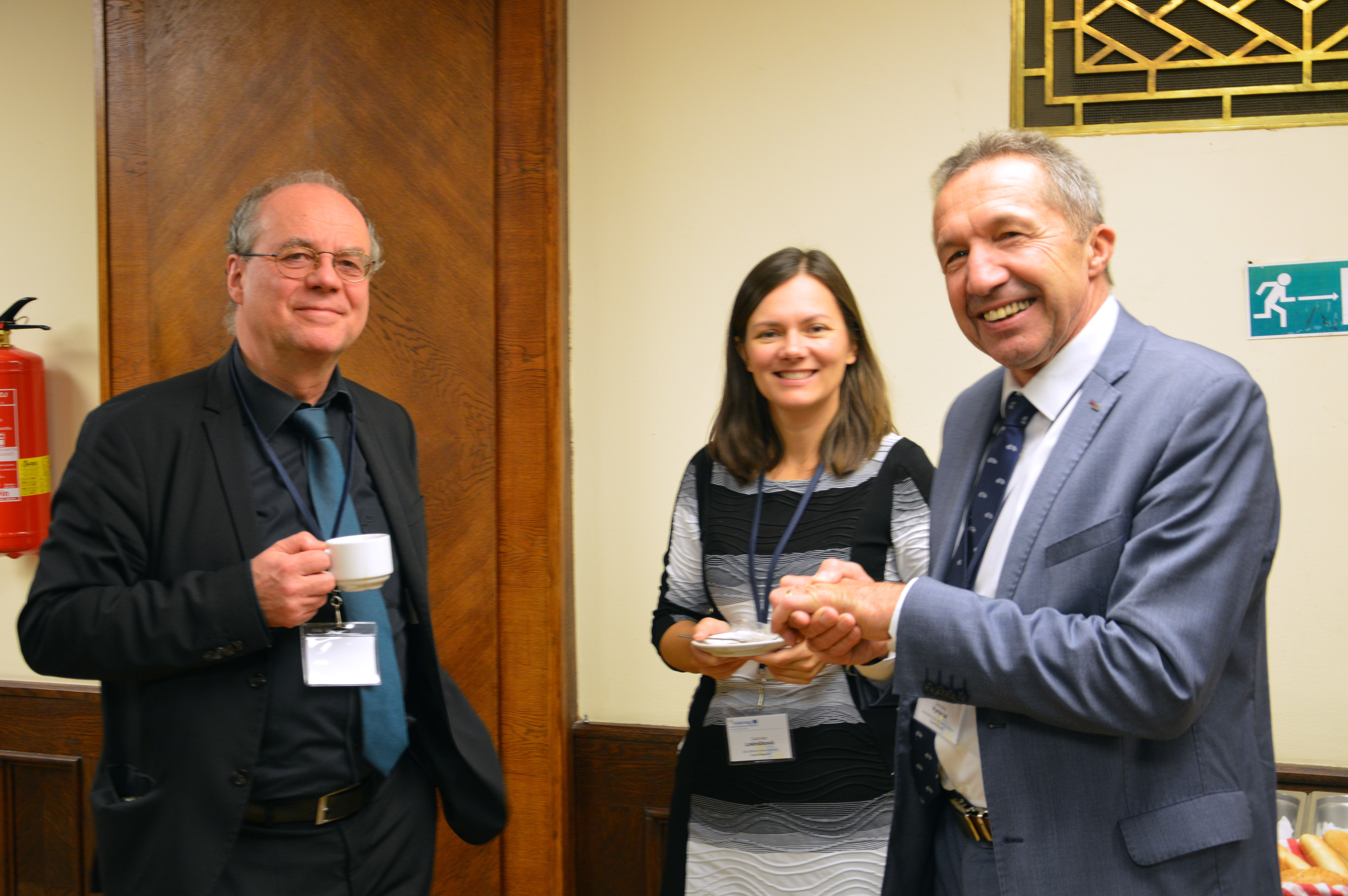
Discussion was an important part of the conference. Photo: Jitka Vrtalová, Czech Partnership for Urban Mobility
